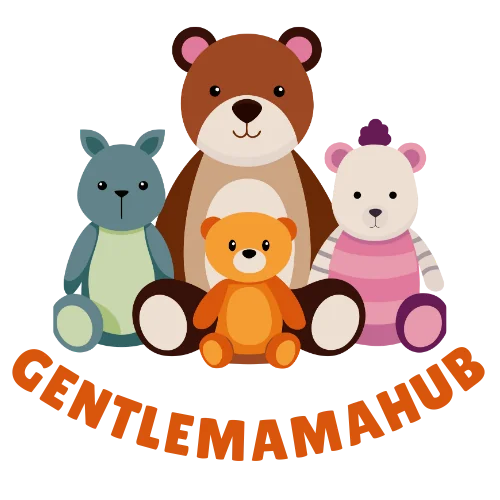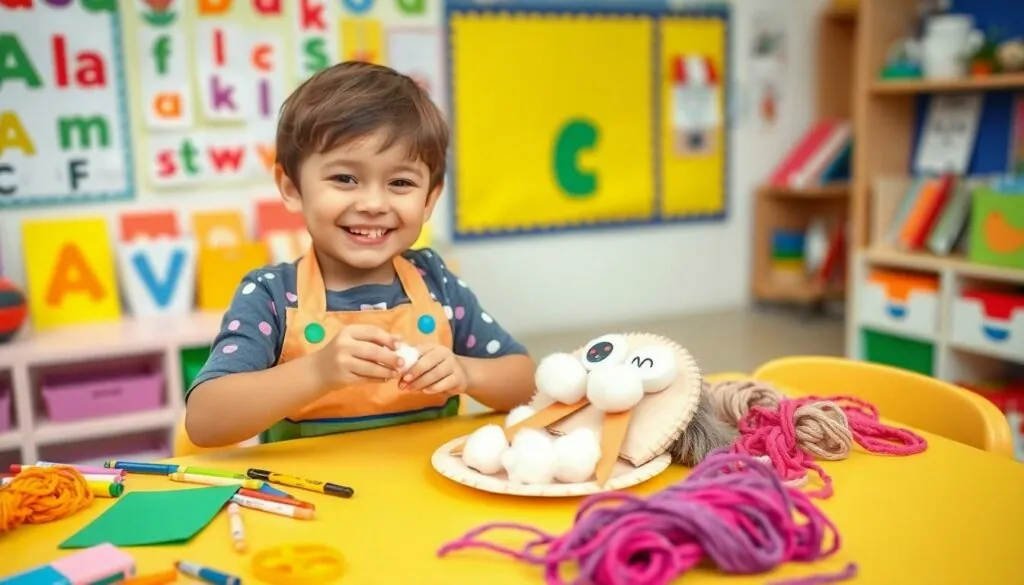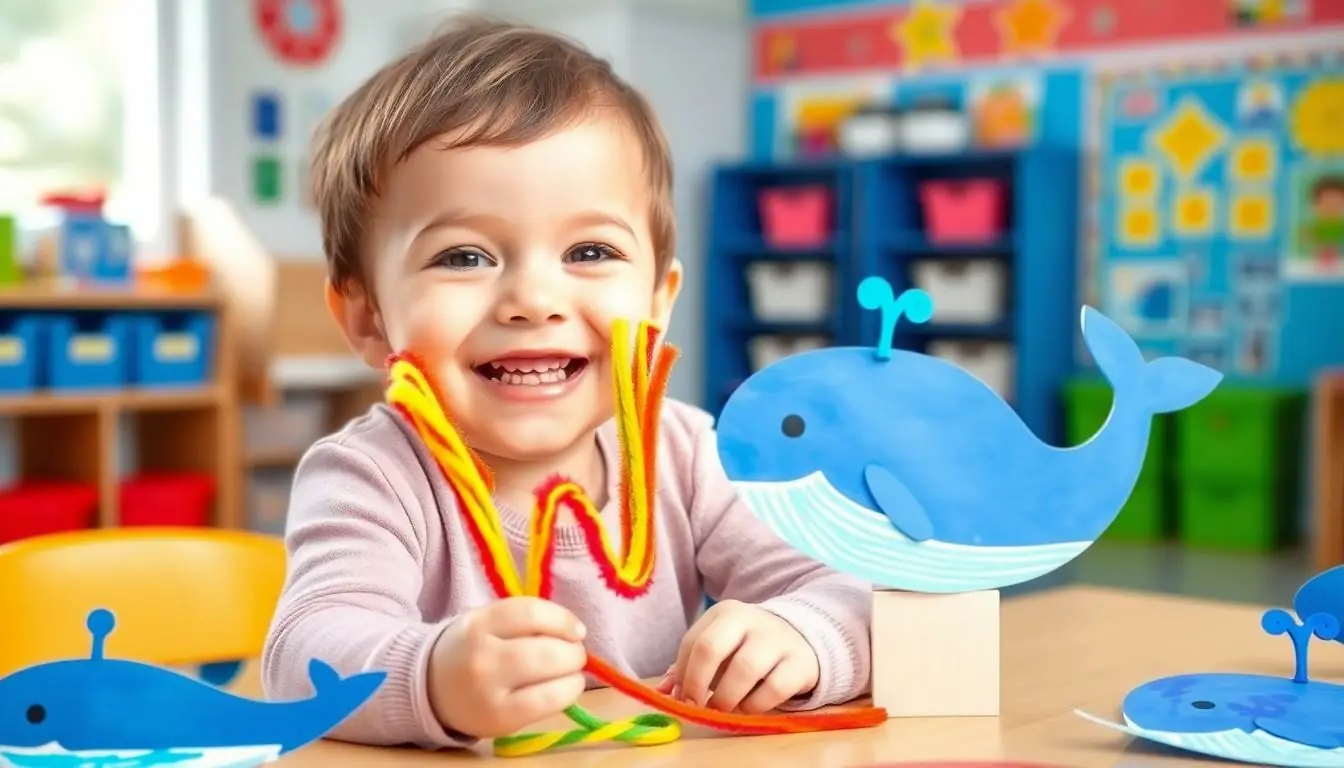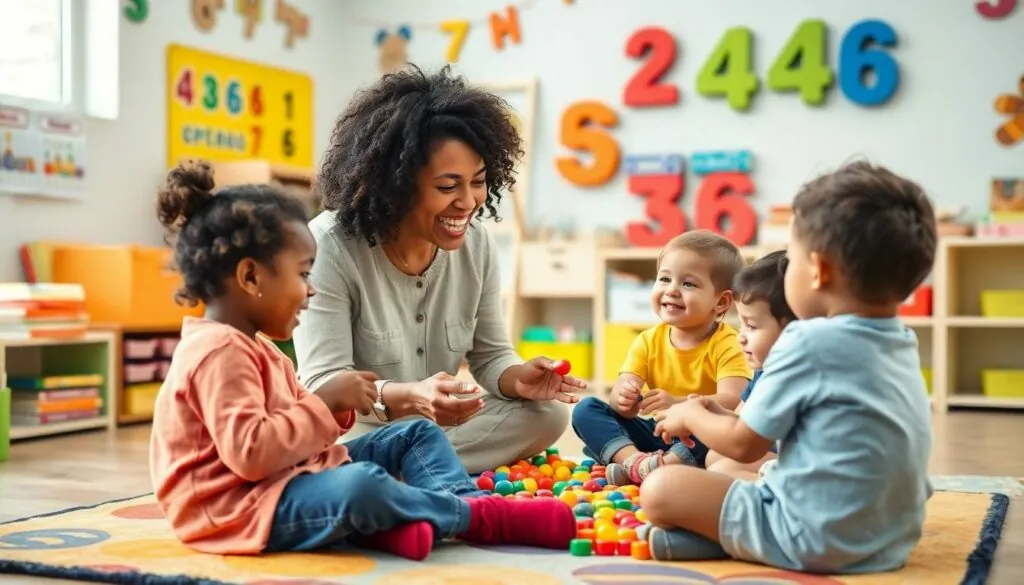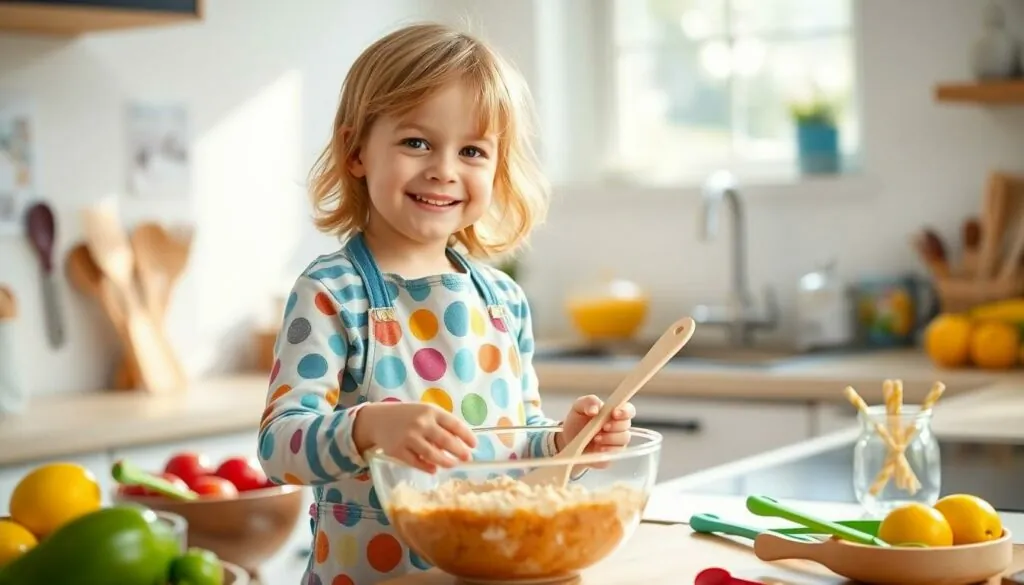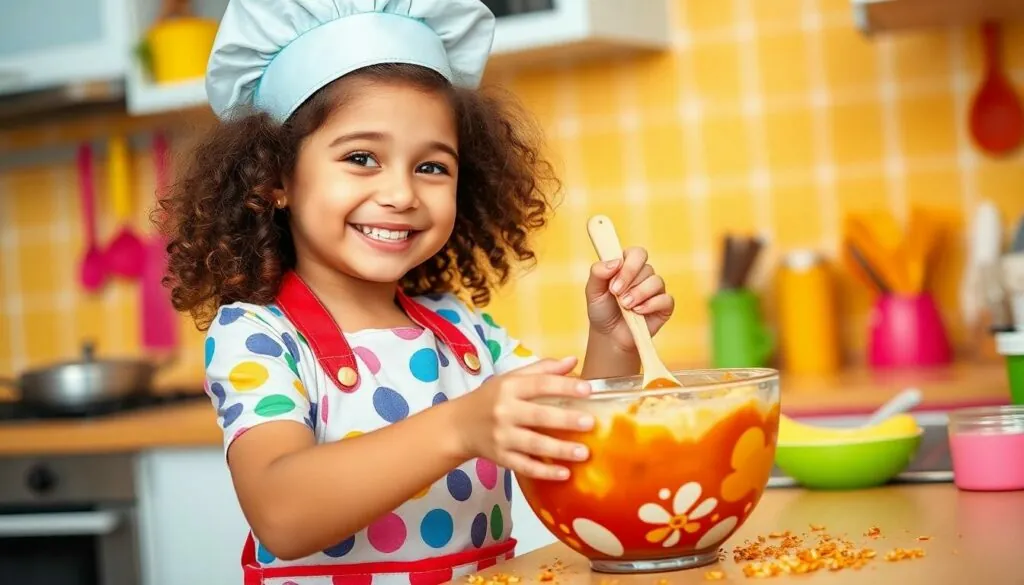Table of Contents
ToggleTeaching preschoolers the letter W doesn’t have to be a snooze fest! These fun and engaging letter W crafts will have little ones wiggling with excitement while they learn. From whimsical walruses to wonderful watercolor projects there’s something to spark every child’s creativity.
Crafting isn’t just about keeping tiny hands busy – it’s a powerful tool for letter recognition and fine motor skill development. When children create letter-themed art they’re building essential pre-writing skills while having a blast. These easy-to-make W crafts use simple materials most parents and teachers already have on hand making them perfect for spontaneous learning moments at home or in the classroom.
Fun Letter W Crafts for the Classroom
Letter W crafts transform ordinary classroom activities into engaging learning experiences. These hands-on projects combine creativity with letter recognition to reinforce early literacy skills.
Easy Paper Crafts
Paper crafts create memorable letter W learning moments through simple folding techniques. Students fold white paper into a “W” shape to craft wings for birds butterflies. Construction paper strips form woven patterns that showcase the letter’s distinctive angles. Children cut wavy lines along paper strips to create wiggly worms complete with googly eyes pipe cleaners. Paper plate walruses feature whiskers made from yarn brown paper triangles for tusks. A wadded paper technique produces textured whale shapes decorated with blue paint spots sequins.
Watermelon Art Projects
Watermelon-themed crafts bring the letter W to life through vibrant colors patterns. Students paint paper plates in pink red shades then add black paper seeds to create watermelon slice art. Tissue paper balls in red pink form textured watermelon shapes on cardstock backgrounds. Children stamp watermelon patterns using cut potatoes dipped in paint. Paper doilies transform into white watermelon rind patterns when paired with pink construction paper. Paint dabbers create dotted watermelon designs perfect for fine motor skill development.
Hands-On Letter Recognition Activities
Letter recognition activities combine tactile exploration with visual learning to reinforce letter W identification in preschoolers. These engaging exercises transform abstract letter concepts into concrete experiences through creative manipulation of materials.
Worm Crafts with Pipe Cleaners
Pipe cleaner worms offer a tactile approach to forming the letter W while developing fine motor skills. Children twist brown or green pipe cleaners into W shapes, adding googly eyes to create whimsical worm characters. The bendable nature of pipe cleaners allows preschoolers to practice letter formation repeatedly, correcting mistakes easily. Adding beads to the pipe cleaners creates a counting activity that combines letter learning with basic math skills. Teachers incorporate these worms into storytelling activities by having children move their creations along letter W paths drawn on paper.
Whale Art Ideas
Preschoolers explore the letter W through whale-themed art projects using simple materials like construction paper blue paint. Children create whale shapes by cutting curved lines practicing scissor skills then add water spouts in W formations. Fingerprint techniques form waves around the whales reinforcing the W sound through repetitive motions. Adding white tissue paper creates textured ocean spray while cotton balls form fluffy clouds above. These whale crafts integrate into ocean-themed units connecting letter recognition with marine life learning.
Sensory Letter W Projects
Sensory activities engage multiple senses while teaching the letter W to preschoolers. These hands-on experiences create lasting connections between tactile exploration and letter recognition.
Water-Based Activities
Water play creates engaging opportunities for letter W recognition through sensory exploration. Children trace the letter W in water-filled trays using their fingers or paintbrushes, developing muscle memory. Adding watercolors to ice cubes lets kids paint winter scenes while practicing W shapes. Filling spray bottles with colored water enables preschoolers to spray W patterns on sidewalks or paper. A water table with floating W-shaped sponges encourages letter identification through splash play. Adding water beads to clear bins creates a textured surface for writing practice.
Weaving with Yarn
Yarn weaving introduces the letter W through rhythmic motions and textural exploration. Preschoolers thread colorful yarn through W-shaped cardboard templates with pre-punched holes. Large wooden frames with nails arranged in W patterns allow children to create geometric designs. Simple cardboard looms feature W-shaped paths for beginning weavers to follow. Children wrap yarn around popsicle sticks positioned in W formations, developing fine motor control. Collaborative weaving projects on pegboards reinforce letter recognition through group activities.
Simple W-Shaped Crafts Using Common Materials
Creating letter W crafts becomes accessible with everyday household items like paper plates, construction paper, glue sticks, scissors, paint, markers, googly eyes, cotton balls, tissue paper, pipe cleaners, popsicle sticks, buttons, glitter, sequins, colored yarn, ribbons, foam sheets, paint brushes, cardboard, and crayons.
Walrus Paper Plate Art
Paper plate walruses bring the letter W to life through tactile exploration. Children paint paper plates gray or brown, then attach cotton balls for tusks and whiskers. Adding googly eyes and construction paper flippers transforms the plate into a playful walrus face. Preschoolers practice fine motor skills by gluing pre-cut shapes onto specific areas of the plate. Creating textured effects with tissue paper pieces adds sensory elements to the craft. The completed walrus displays prominent W-shaped features in the whiskers, making letter recognition natural and engaging.
Wings and Weather Crafts
Butterfly wing crafts incorporate W shapes through symmetrical folding techniques. Children paint both sides of construction paper, fold it into a W pattern, then unfold to reveal colorful wing designs. Weather-themed projects include creating W-shaped clouds using cotton balls or crafting paper raindrops with blue tissue paper. Preschoolers arrange popsicle sticks in W formations to make windmills, decorating them with colorful paper or ribbon streamers. These crafts integrate mathematical concepts like symmetry with letter recognition while exploring weather elements through creative expression.
Benefits of Letter W Art Activities
Letter W art activities enhance fine motor development through cutting paper strips tracing letter shapes. Children develop stronger hand muscles grip strength through activities like weaving yarn shaping pipe cleaners painting with brushes.
These creative projects boost letter recognition skills in 3 key ways:
- Visual memory improves as kids see the W shape in different contexts like watermelons whales walruses
- Muscle memory develops when children trace form cut out W shapes repeatedly
- Sound association strengthens by connecting crafts to words starting with W sounds
Sensory engagement accelerates learning through:
- Tactile exploration of textured materials like cotton balls tissue paper yarn
- Visual stimulation from bright colors patterns shapes
- Auditory reinforcement from saying W words during craft time
The social emotional benefits include:
- Pride accomplishment from completing creative projects
- Confidence building through artistic expression
- Peer interaction during group craft activities
- Focus concentration while working on detailed tasks
Math science concepts naturally integrate through:
| Concept | Activity Example |
|---|---|
| Counting | Adding 5 cotton balls for clouds |
| Patterns | Creating repeating W designs |
| Symmetry | Folding butterfly wings |
| Color mixing | Watercolor paint blending |
Hand eye coordination improves as children:
- Guide scissors along curved W shapes
- Place small items like googly eyes precisely
- Control paint brushes within lines
- Thread yarn through specific holes
These engaging activities create positive associations with letter learning through creative play exploration discovery.
Best Materials and Supplies for Letter W Crafts
Essential craft supplies make letter W projects engaging for preschoolers:
Basic Materials:
- Construction paper in various colors
- White cardstock
- Child-safe scissors
- Washable glue sticks
- Non-toxic paint in primary colors
- Paint brushes in different sizes
- Paper plates
- Crayons markers
Decorative Elements:
- Wiggle eyes
- Cotton balls
- Colorful yarn
- Pipe cleaners
- Sequins
- Pom poms
- Craft feathers
- Glitter glue
Sensory Materials:
- Play dough
- Watercolors
- Water beads
- Sand
- Tissue paper
- Textured paper
- Bubble wrap
- Rice
Tools:
- Safety scissors
- Glue bottles
- Paint cups
- Pencils
- Markers
- Paintbrushes
- Paper plates
- Craft sticks
| Material Type | Quantity per Child | Storage Tips |
|---|---|---|
| Construction Paper | 5-6 sheets | Store flat in dry area |
| Glue Sticks | 1-2 sticks | Keep caps tight |
| Paint | 2-3 tablespoons | Use sealed containers |
| Decorative Items | 10-15 pieces | Sort in compartments |
| Sensory Materials | 1 cup | Store in airtight bins |
Store materials in clear containers labeled with pictures for easy access. Keep washable supplies separate from permanent materials to prevent stains. Organize tools at child height for independent crafting.
Conclusion
Letter W crafts offer preschoolers an exciting way to master letter recognition while developing essential skills. These hands-on activities transform ordinary learning into memorable experiences that children truly enjoy. From whimsical walruses to watercolor paintings each project builds confidence and creativity.
Parents and teachers can easily implement these crafts using readily available materials while creating lasting educational impact. The combination of sensory exploration fine motor development and artistic expression makes letter W crafts an invaluable tool in early childhood education.
These engaging activities set the foundation for literacy success by making learning both fun and meaningful for young minds.
